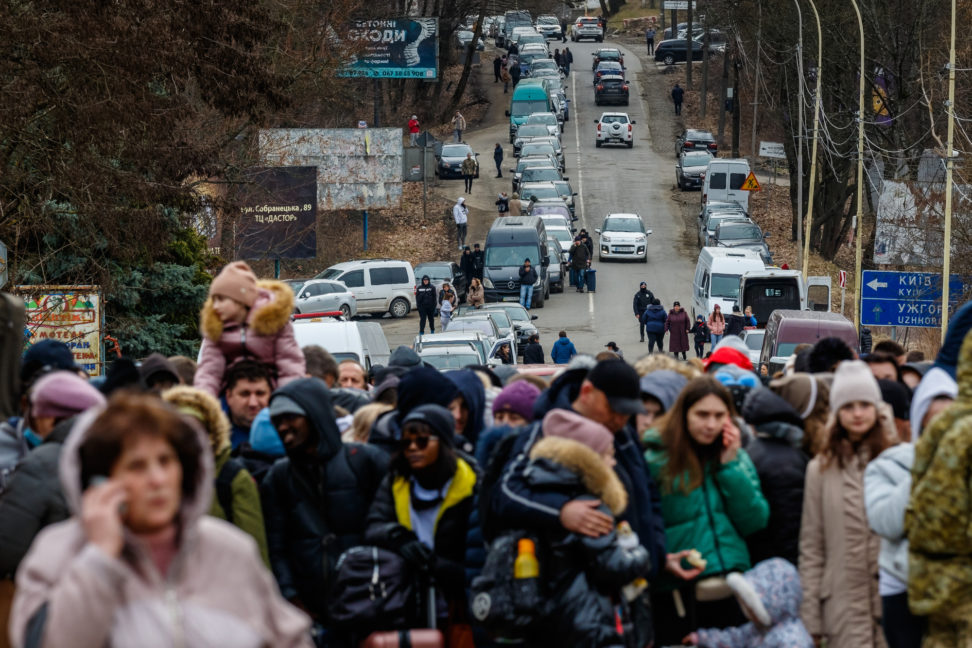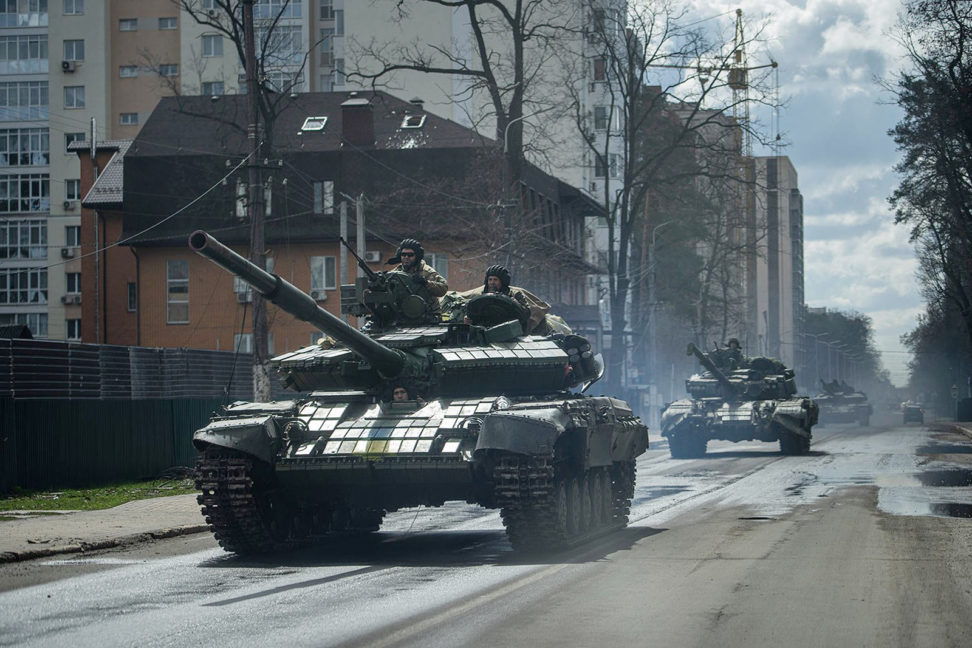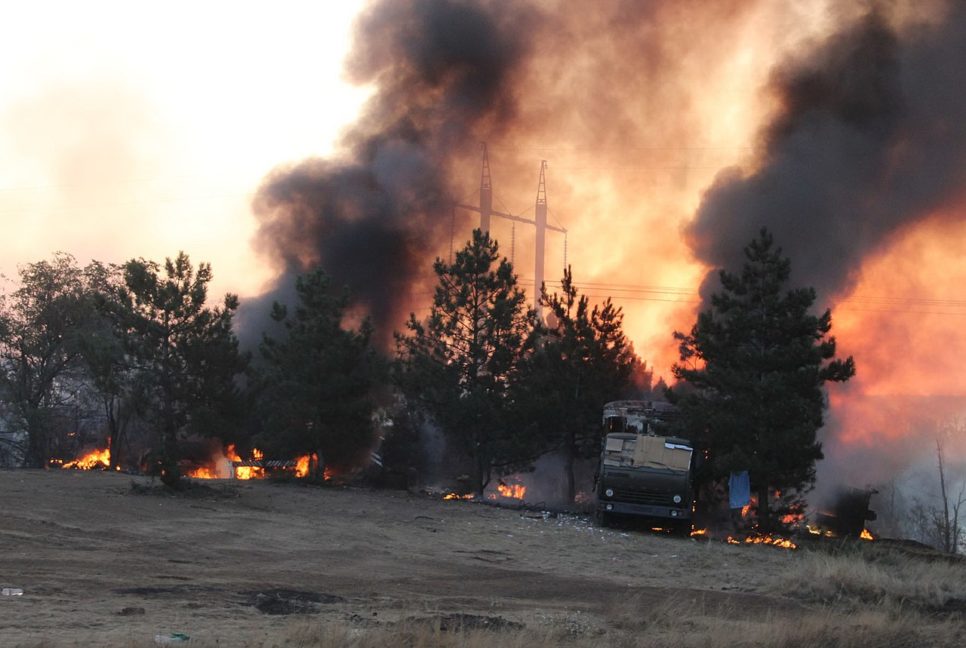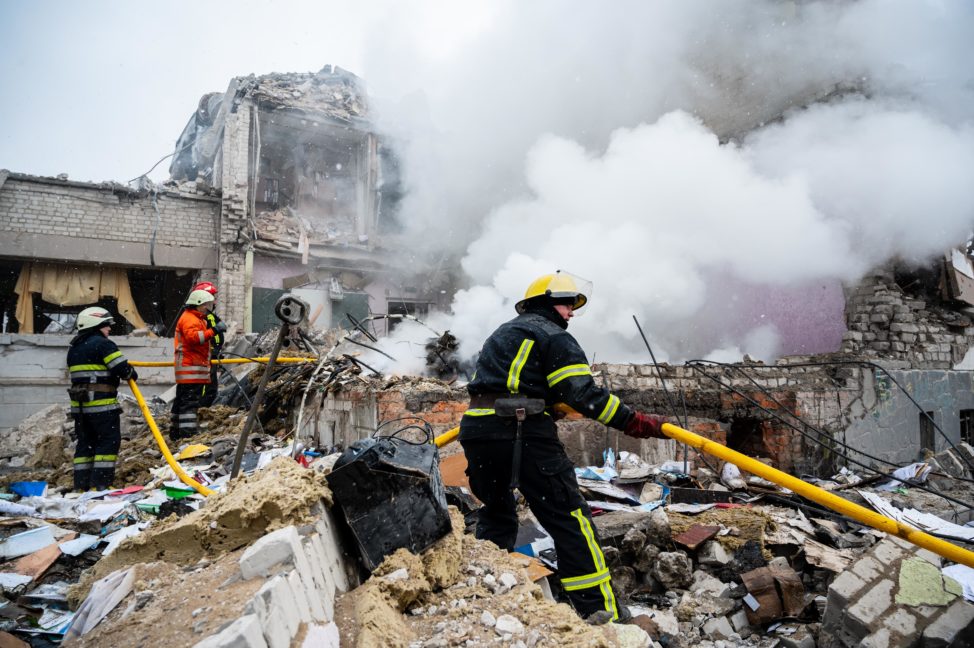The war in Ukraine caused an estimated 100 million tons of CO2e in the first seven months. That is as much as, for example, the Netherlands emits in the same period. The Ukrainian Ministry of the Environment presented these figures at a side event for the COP27 climate summit in Sharm el Sheik1. The study was initiated by Dutch climate and energy project expert Lennard de Klerk, who has lived and worked in Ukraine for a long time. He developed climate and energy projects in heavy industry there, as well as in Bulgaria and Russia. Representatives of several international consulting firms for climate protection and renewable energy and a representative of the Ukrainian Ministry of the Environment collaborated on the study2.
Emissions due to refugee movements, hostilities, fires and the reconstruction of civilian infrastructure were examined.
Flight: 1,4 million tons of CO2e
The study first examines the flight movements triggered by the war. The number of people who fled the war zone to western Ukraine is estimated at 6,2 million, and the number of those who fled abroad at 7,7 million. Based on the places of departure and destination, the means of transport used could be estimated: car, train, bus, short and long-haul flights. About 40 percent of the refugees have returned to their home towns after the withdrawal of Russian troops. In total, the extent of traffic emissions from flight is estimated at 1,4 million tons of CO2e.
Military operations: 8,9 million tons of CO2e
Fossil fuels are an essential component of military operations. They are used for tanks and armored vehicles, airplanes, transporters for ammunition, soldiers, food and other supplies. But civilian vehicles such as rescue and fire engines, evacuation buses, etc. also consume fuel. Such data is difficult to obtain even in peacetime, let alone in war. The consumption of the Russian army was estimated at 1,5 million tons based on observed fuel transports to the war zone. The authors calculated the consumption of the Ukrainian army at 0,5 million tons. They explain the difference by saying that the Ukrainian army has shorter supply routes than the attackers and that they generally use lighter equipment and vehicles. The total of 2 million tons of fuel caused emissions of 6,37 million tons of CO2e.
The use of ammunition also causes considerable emissions: during production, during transport, when the propellant burns when it is fired and when the projectile explodes on impact. Estimates of artillery shell consumption vary between 5.000 and 60.000 per day. More than 90% of the emissions are due to the production of the projectiles (steel jacket and explosives). In total, emissions from munitions are estimated at 1,2 million tonnes of CO2e.
Fires: 23,8 million tons of CO2e
Satellite data shows how many fires – caused by shelling, bombing and mines – have increased in the war zones compared to the previous year: the number of fires with an area of more than 1 ha increased 122-fold, the affected area 38-fold. Forest fires account for most of this Emissions from fires in the first seven months of the war accounted for 23,8 million tons of CO2e.
Reconstruction: 48,7 million tons of CO2e
Most of the emissions caused by the war will come from rebuilding the destroyed civilian infrastructure. Some of this is already happening during the war, but most of the reconstruction will not begin until after hostilities have ended. From the beginning of the war, the Ukrainian authorities have documented the destruction caused by hostilities. The data collected by various ministries were processed into a report by the Kyiv School of Economics in cooperation with a team of experts from the World Bank.
Most of the destruction is in the housing sector (58%). As of September 1, 2022, 6.153 city homes were destroyed and 9.490 damaged. 65.847 private homes were destroyed and 54.069 damaged. The reconstruction will take into account new realities: due to the population decline, not all housing units will be restored. On the other hand, Soviet-era apartments are very small by today's standards. New apartments will probably be larger. Current building practice in Eastern and Central Europe was used to calculate the emissions. Cement and brick production is a major source of CO2 emissions, and bricks are major sources of CO2 emissions New, less carbon-intensive building materials will likely become available, but due to the extent of the destruction, much of the construction work will be done using current methods. The emissions from the reconstruction of housing units are estimated at 28,4 million tons of CO2e, the reconstruction of the entire civil infrastructure - schools, hospitals, cultural and sports facilities, religious buildings, industrial plants, shops, vehicles - at 48,7 million tons.
Methane from Nord Stream 1 and 2: 14,6 million tons CO2e
The authors also count the methane that escaped during the sabotage of the Nord Stream pipelines as emissions from refugee movements, combat operations, fires and reconstruction. While it is not known who carried out the sabotage, it seems fairly certain that it was linked to the Ukraine war. The escaped methane corresponds to 14,6 million tons of CO2e.
___
Cover photo by Luaks Johnns on Pixabay
1 https://seors.unfccc.int/applications/seors/attachments/get_attachment?code=U2VUG9IVUZUOLJ3GOC6PKKERKXUO3DYJ , see also: https://climateonline.net/2022/11/04/ukraine-cop27/
2 Klerk, Lennard de; Shmurak, Anatolii; Gassan-Zade, Olga; Shlapak, Mykola; Tomolyak, Kyryl; Korthuis, Adriaan (2022): Climate Damage Caused by Russia's War in Ukraine: Ministry of Environmental Protection and Natural Resources of Ukraine. On-line: https://climatefocus.com/wp-content/uploads/2022/11/ClimateDamageinUkraine.pdf
This post was created by the Option Community. Join in and post your message!







